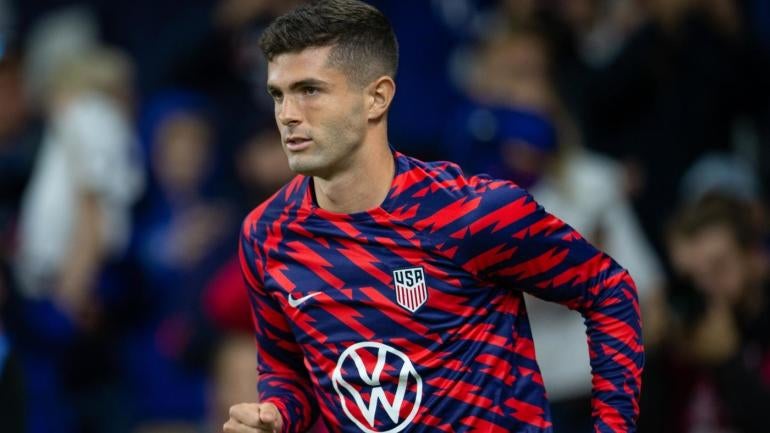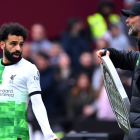
U.S. men's national team star Christian Pulisic said the group is cautiously, but ambitiously, setting a goal of lifting the Copa America next summer.
"There's no measure to say exactly, 'If we get this far, that's success,'" the winger told The Athletic. "We're going in with the mentality [of] taking it game by game and, of course, the goal is to win the tournament — always when you go into a tournament — so that's how we look at things. We have a good young team and this is a great opportunity for us to play against the world's best and hopefully show the world what we can do."

Golazo Starting XI Newsletter
Get your Soccer Fix from Around the Globe
Your ultimate guide to the Beautiful Game as our experts take you beyond the pitch and around the globe with news that matters.
Thanks for signing up!
Keep an eye on your inbox.
Sorry!
There was an error processing your subscription.
It's an aspirational target for the USMNT, who are using the expanded version of the South American championship as a benchmark for their own progress ahead of the 2026 World Cup on home soil. It would also serve as a nice follow-up act to their last time at the Copa America, when they made a run to the semifinals in 2016 during another expanded tournament celebrating the its centenary. Straightforward progress, though, is easier said than done, especially in the context of today's team.
Though the USMNT boast the most promising talent pool in recent memory, winning the Copa America -- and perhaps even repeating as semifinalists -- might be a tall order. That is not only considering the field, which includes World Cup winners Argentina, but because of a handful of hurdles that could be in the team's way come June. That said, a deep run is the right aim for a U.S. team aiming to make a statement both next summer and a couple of years from now, and how they tackle the obstacles ahead of them could offer plenty of answers on their progress ahead of the 2026 World Cup.
Here's a look at the internal and external factors that the USMNT will be up against by summertime.

Golazo Starting XI Newsletter
Get your Soccer Fix from Around the Globe
Your ultimate guide to the Beautiful Game as our experts take you beyond the pitch and around the globe with news that matters.
Thanks for signing up!
Keep an eye on your inbox.
Sorry!
There was an error processing your subscription.
A tough draw
Gregg Berhalter's side were placed in a favorable group during last month's draw and will have the chance to showcase their argument as regional heavyweights in their first two Group C matches against Bolivia and Panama. It will be imperative that the team gets in a good rhythm with those games, because it likely will not get any easier from that point on.
The USMNT will finish off the group stage against Uruguay, who after years of less-than-ideal performances are fully on the rise once again and might just be a dark horse to win the whole thing. La Celeste recently picked up big wins over Argentina and Brazil in World Cup qualifying and have the tactical flexibility to beat anyone and will no doubt eye top spot in the group and for good reason -- it might be the best way to avoid Brazil in the quarterfinals.
Despite recent struggles, Brazil are still the favorites to top Group D and as a result would take on the Group C runners-up in the quarterfinals. The Selecao would most likely be the favorites in that matchup and the draw could result in an earlier-than-desired exit from the Copa for the USMNT, but topping Group C does not ensure that the hosts would be out of the woods. Colombia are expected to finish second in Group D, and after rising to third place in CONMEBOL World Cup qualifying and beating Brazil on the way, they might also have the goods to send the USMNT packing.
For a team that is eager to make a statement, notching a surprise win sometime during the tournament would be the ultimate way to show they are on the right track ahead of 2026. If the USMNT's Copa America ends before the semifinals, though, the progress report will likely come down to the actual performances -- and not necessarily the results -- against Uruguay and their subsequent opponent to determine if they were on the receiving end of a rough draw or have a lot of room for improvement.
Injuries and the talent pool
The USMNT's current talent, especially in midfield, teases a lot of potential about how far the team could actually go in the Copa America. Take Jesse Marsch's word for it -- the former Leeds United coach talked about the tactical flexibility available to Berhalter on the latest episode of Call It What You Want.
"I'm starting with Tyler Adams, I'm starting with Weston McKennie and I'm starting with Yunus Musah," he said on a theoretical lineup against one of the world's top teams. "If it's against a team where you feel like you're going to dominate the ball more, then I would start with Gio Reyna and then take Yunus Musah off the pitch, so it would just depend a little bit on what you need on the given day … Having that flexibility with those four midfielders, I think, is the right way to go and, by the way, if it's me, I'm still probably trying to think about how to use all four of them at times, as well, together."
It's worth remembering, then, that that quartet will have had very little time to play together in the buildup to the tournament. Between Adams' two hamstring surgeries as well as injury issues for McKennie and Reyna, Berhalter's prep for the Copa America has been hampered considerably by absences. The head coach has naturally tried to expand the player pool as much as one can since he returned to the job last September, but results have varied.
Adams and Reyna have been notably difficult to replace despite the many players who have slotted in and the different tactical approaches Berhalter has taken in recent months. McKennie and Musah have carved out instant starting spots while others miss out with injury, while the likes of Johnny Cardoso and Lennard Maloney got looks at the end of last year. The former seems like the frontrunner to be the next guy up, especially after his move to Real Betis this month, but has himself missed time with an injury. Chris Richards has also played midfield for Crystal Palace but has yet to do so for the national team.
A fully fit USMNT continues to boast plenty of promise, but there's a real concern that the best version of the team might not be available come June. Even if they are, a deep run at any tournament will require bench players to play a sizable role, and the question marks lingering around the team's depth could dampen the team's chances at a meaningful string of performances this summer.





















